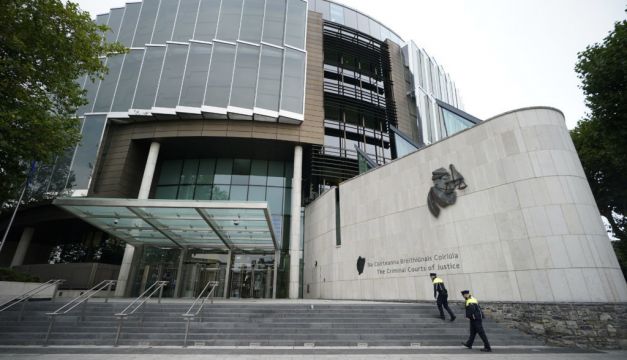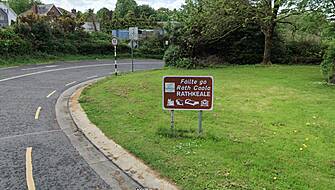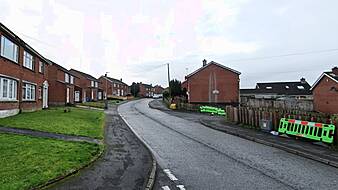A pathologist has told the jury in the trial of a Polish man charged with the murder of a 24-year-old Mayo man that there is no way to determine the force used in the single stab wound, saying it was “unfortunate” that the knife severed a vital artery causing death.
On Thursday, Dr Kathleen Han Suyin gave evidence at the Central Criminal Court that someone “could have walked in” to a knife held by someone else, which would result in a stab wound of at least 12cm. However, she also said that such a wound could be caused by someone exerting force when stabbing.
Matusz Batiuk (33), formerly of Carrabeg Estate, Swinford in Co Mayo, has pleaded not guilty to murdering Michael McDonagh at the housing estate in Swinford on November 16th, 2020.
The jury previously heard that the accused said he believed his life was in danger and stabbed Mr McDonagh in the stomach.
Dr Han Suyin gave evidence to prosecuting counsel Desmond Dockery SC that she conducted the postmortem on Mr McDonagh on November 17th, 2020, at Mayo General Hospital.
She confirmed that as part of the process, she was shown photographs of a large kitchen knife with a black plastic handle, which she said measured 29.5cm from the hilt to the tip. The handle was 13cm and the metal blade with a serrated edge was 16.5cm, with blood and greasy smears on the blade.
Dr Han Suyin said the stab wound on Mr McDonagh was 4cm in length and 3cm in width. The wound was vertical, with a sharp superior end and a curved inferior end. She said that when the wound was compressed, it lengthened to 6cm.
The wound was in a forward and upwards direction, which meant the direction of the knife moved up slightly at an angle and pushed forward, piercing the skin, soft tissue and the fascia of the abdominal muscle.
She said the stab wound went through skin and fat and pierced the rectus abdominis muscle and went into the abdominal cavity itself, where the organs are. It severed the right common iliac artery in two, which carries blood to the pelvic region and legs. The artery is towards the back of the body, and the witness said that the depth of the wound was at least 12cm.
Dr Han Suyin confirmed to Mr Dockery that the dynamics of a penetrating injury could add extra centimetres to the injury, so it may have been 12.5 to 13cm.
She said that 375ml of blood from the wound leaked into the peritoneal cavity, and there was haemorrhaging of at least 500ml in the soft tissue surrounding the wound and in the pelvic cavity.
Evidence
Dr Han Suyin said she was satisfied from the evidence that there was a single stab wound that severed the right common iliac artery, which caused extensive acute and rapid blood loss.
“That injury was the cause of death, it was not possible to survive,” she said.
She said that only one side of the knife used was sharp, which was consistent with the knife she was shown in the photographs.
Counsel for the defence, Vincent Heneghan SC asked the witness if she thought it would be “very unfortunate” to actually strike this artery with one stab wound.
“It would be, it’s quite a deep vessel. It was unfortunate that it transected this vessel,” replied Dr Han Suyin.
Readdressing the witness on behalf of the prosecution, Mr Dockery asked her how much force would be required for a knife to reach it.
“It’s difficult to be accurate. Is it possible to walk into? Yes. Is it possible to exert that much force? Yes. It’s possible in both scenarios. It’s just unfortunate that this artery was transected,” said Dr Han Suyin.
She said that the fact that the wound was at least 12cm does not give an indication of the force at the time.
“It just means a situation where someone held the knife. The other person could have walked in,” said the witness.
“Do you have a view as to whether inserting at least 12cm of a blade into a man’s stomach would cause serious injury or death?” asked Mr Dockery.
“At that depth, not just into an artery but an organ, it would be life-threatening,” replied Dr Han Suyin.

The jury also heard from forensic scientist, Dr Alan Magee, who gave evidence that Mr McDonagh’s blood was found on the blade, as was a trace level of blood that matched that of Paul Maughan, a witness in the case. He said that samples he analysed from the crime scene showed that Mr Maughan’s blood was on doors in the house, a tabletop, and the bathroom sink.
The jury previously heard that Mr Maughan made a statement to gardaí in which he said that the accused “went for” Mr McDonagh with the knife and “tried to do him” and then “went for” Mr Maughan himself. Mr Maughan said that while trying to protect himself, he pushed Mr Batiuk away and suffered cuts to his thumbs from the knife.
However, in his direct evidence to the court, Mr Maughan said he had suffered the cuts to his hands when he broke a wine bottle that he was trying to open. He told the jury that he did not witness the fatal stabbing, while also admitting that he broke into the accused's home and stabbed him months before.
The trial continues on Friday before Ms Justice Mary Ellen Ring and a jury of nine men and three women.







